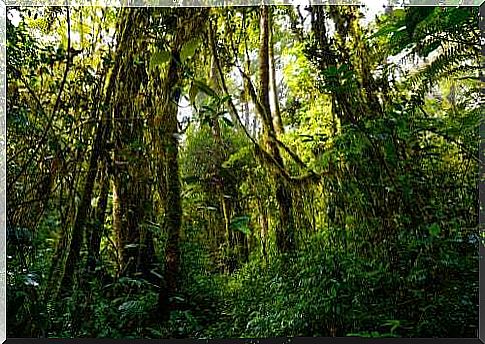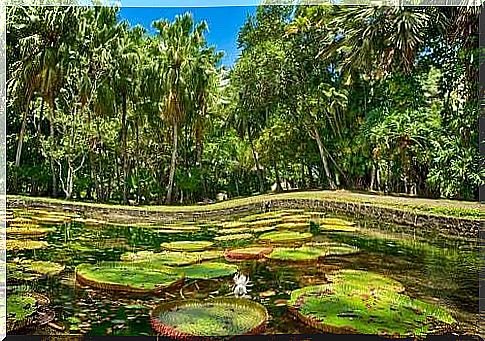The Richest Biodiversity Forests On The Planet

Forests are a typical biome of the non-dry areas of the planet and are distributed all over the world. Many years ago, these places so rich in biodiversity became an important tourist attraction due to their natural beauty and because they are home to millions of animal species. In this article, we will talk about the most biodiverse forests on the planet.
What are the most biodiverse forests on the planet?
The Amazon rainforest, by far the richest in biodiversity forest
Undoubtedly, the first place among the most biodiverse forests on the planet must be granted to the Amazon. This impressive rainforest spans more than 10 countries in South America and covers over 1,500,000 km². However, over 60% of its forests and biodiversity are found in the territory of Brazil.
In addition to being the largest forest in the world, the Amazon is also recognized around the world for its biodiversity. Currently, the Amazon rainforest is estimated to be home to 400 billion trees, of around 16,000 different species.

As for its fauna, experts say that one of 10 known species lives in the Amazon and many of them are at risk of extinction.
Tongass National Forest (Alaska-United States)
Located in southeastern Alaska, Tongass Forest National Park has a tropical jungle of nearly 70,000 km². Being a remote region, its biodiversity is preserved and its forests serve as a refuge for numerous endangered species.
Inside the Tongass forest we find snow-capped mountainous regions, large forests, swamps, rocky areas and very rich biodiversity. Thanks to its beauty and optimal infrastructure for tourism, the forest receives nearly one million people every year.
Monteverde (Costa Rica)
In Costa Rica, Monteverde rainforests stand out, forming a large tropical rain biome. They are very humid ecosystems that are concentrated in the mountainous areas of the country. Contrary to what one might think, internal temperatures are generally relatively low.
In the Monteverde jungle we find a privileged flora, with over 500 species of orchids. In turn, the fauna includes over 150 species of reptiles and amphibians.
Primorsky Krai (Siberia-Russia)
Siberia is one of the most amazing places on our planet. Although many imagine it as a “second north pole”, Siberia comprises several biomes, including the Primorsky Krai jungle.
Located in the south-east of the Russian territory, on the border with China, this landscape is made up of almost 80% of large forests. In them live the famous Siberian tigers and the Amur leopards, both at risk of extinction.
Vancouver Island (Canada)
Many of us would never associate the image of a jungle with a country with severe winters like Canada. However, Vancouver Island surprises us with its forests of yellow cedars, white pines, Pacific tsugas, maples, spruce alders and Douglas firs.

This forest is also home to wolves, pumas, marmots, and even black bears. The southern region is quite populated: it offers several options for tourism and leisure, not to mention the rivers, lakes and fjords that make up its beautiful landscape.
Western Mountains (India), among the areas of the world richest in biodiversity
The western mountains of India encompass four tropical areas north of Ghat, southwest of India. The jungle stretches for nearly 50,000 km², up to the Joga waterfalls, an important tourist attraction in the country.
However, only 5% of its forests have been declared protected areas by the World Wild Fauna Fund. In these forests live in numerous species whose survival is threatened, such as Asian elephants, black panthers and tigers.
Harapan (Indonesia)
The Harapan jungle, located on the island of Sumatra, Indonesia, covers over 98,000 hectares. Currently, over 300 bird species are estimated to find their habitat in this tropical biome. In it we find some mammals in danger of extinction, such as rhinos and Sumatran tigers.
Unfortunately, the Harapan rainforest has suffered considerable devastation since the 1970s. Currently, the project to build a highway through the jungle poses a huge risk to its biodiversity.
Appalachian Mountains (United States)
Finally, among the most biodiverse forests on the planet, are the incredible Appalachian Mountains, located in the eastern part of the United States. This hot and humid region is considered tropical and most of the time receives around 1,500 mm of annual rainfall with temperate temperatures.
In its enchanting fauna we find very rare species, such as black bears, white-tailed deer and squirrels. Furthermore, this North American jungle is the habitat of over 30 species of salamanders.








